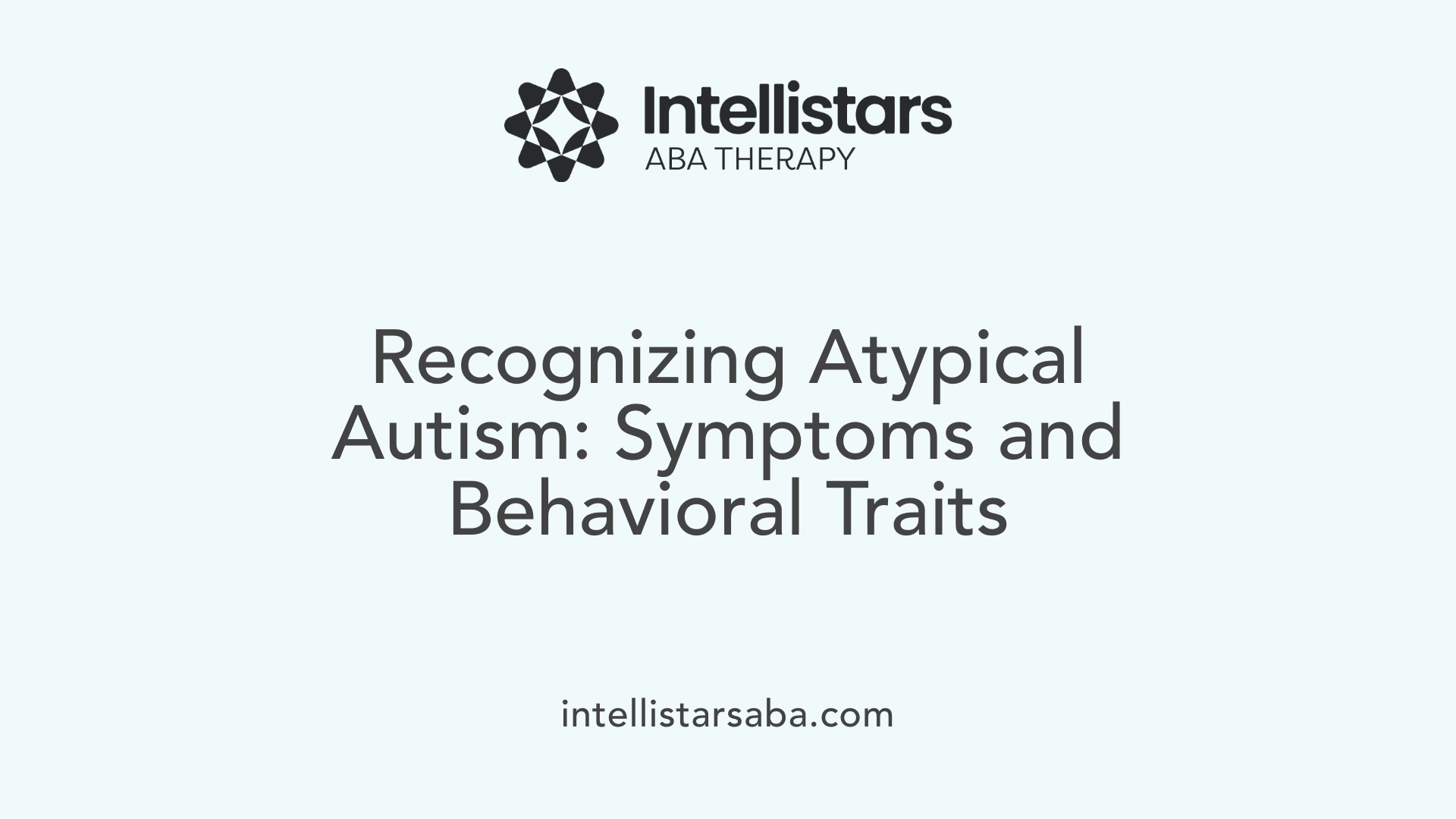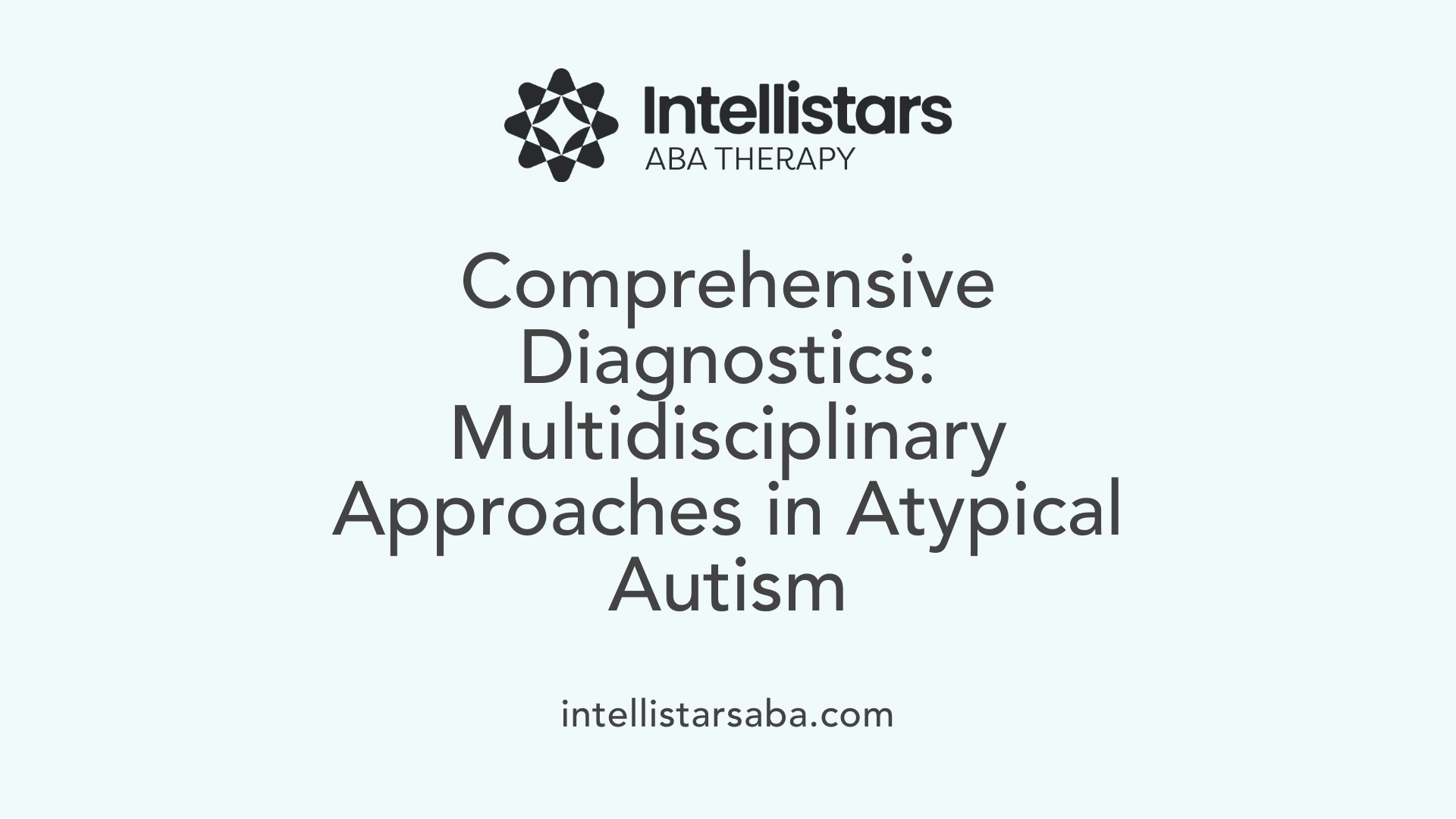Understanding Atypical Autism
Atypical autism, also referred to as PDD-NOS (Pervasive Developmental Disorder-Not Otherwise Specified), represents a unique and often less straightforward manifestation of autism spectrum disorder (ASD). While it shares many characteristics with classic autism, atypical autism is distinguished by its milder developmental delays and less pronounced repetitive behaviors. This article delves into what atypical autism entails, its clinical presentation, genetic factors, diagnostic challenges, and current therapeutic approaches, including the role of Applied Behavior Analysis (ABA) therapy, aiming to provide a comprehensive overview to enhance understanding and support effective intervention.
Defining Atypical Autism and its Place on the Autism Spectrum
What is atypical autism?
Atypical autism, also known as Pervasive Developmental Disorder-Not Otherwise Specified (PDD-NOS), is a form of autism spectrum disorder featuring milder developmental and social delays. Unlike classic autism, it displays fewer or less pronounced stereotypical behaviors, and symptoms may emerge after the age of three.
Diagnostic criteria differences with classic autism
Atypical autism does not meet the full diagnostic criteria set for classic autism, mainly because the range and severity of symptoms vary. Individuals often show an uneven pattern of autistic traits, making diagnosis more complex compared to those with classical presentations. Social interaction difficulties, communication challenges such as delayed or unusual speech, and repetitive behaviors or restricted interests are common but manifest differently.
Inclusion in ICD-10 and DSM-5
This disorder is classified under the ICD-10 code F84.1. The DSM-5 has integrated PDD-NOS into the broader autism spectrum disorder (ASD) category, reflecting its position on the spectrum rather than as a distinct condition.
Symptom variability and onset age
Symptoms related to atypical autism can appear later than in classic autism, often after age three. This delayed onset contributes to diagnostic challenges. The uneven distribution of symptoms means some core autistic features might be mild or missing altogether, further differentiating atypical autism from other forms on the spectrum.
Symptoms and Behavioral Characteristics of Atypical Autism

Social interaction and communication differences
Atypical autism involves difficulties in social interaction and communication, such as challenges in engaging with others and understanding social cues. Individuals may experience delayed speech development or display unusual speech patterns that differ from typical language use.
Repetitive behaviors and restricted interests
Those with atypical autism exhibit repetitive behaviors and restricted interests, although these may be less intense or frequent compared to classic autism. These behaviors can include repetitive movements or a strong focus on specific topics.
Comparison with classic autism symptoms
Unlike classic autism, atypical autism does not meet all criteria required for a full autism diagnosis. Symptoms may appear after age three and show an uneven distribution, making the condition milder but still impactful. While social communication deficits are present, stereotypical behaviors tend to be less pronounced.
Challenges in diagnosis
Due to the uneven presence of symptoms and their milder expression, diagnosing atypical autism is more challenging. Comprehensive evaluations—covering developmental history, behavior assessments, and communication testing—are crucial. This complexity underlines the importance of experienced clinicians to differentiate atypical autism from other developmental disorders.
Genetic and Neurodevelopmental Underpinnings of Atypical Autism

Associated genes and their roles
Atypical autism, also known as PDD-NOS, has been linked to several genetic factors that influence its development. Notable genes associated with this condition include SHANK3, NLGN3, NLGN4X, FMR1, and MECP2. These genes play critical roles in brain function, particularly in processes related to neural connectivity and synaptic organization.
Genetic influence on neural development and synaptic function
The SHANK3 gene is essential for synaptic scaffolding, helping to maintain synaptic strength and plasticity, which are crucial for communication between neurons. NLGN3 and NLGN4X genes code for neuroligins, proteins integral to synapse formation and function. Mutations in these genes can disrupt synaptic signaling pathways, contributing to developmental and behavioral symptoms observed in atypical autism. Additionally, FMR1 is associated with fragile X syndrome and affects synaptic protein synthesis, while MECP2 plays a role in gene regulation critical for brain maturation and neuronal function.
Research trends and implications for therapy
Ongoing clinical trials and research focus on understanding how these genetic variations affect the neurodevelopmental trajectory in atypical autism. This has important implications for therapeutic strategies. Behavioral therapies, including cognitive-behavioral therapy (CBT), have shown promise and are being studied through randomized controlled trials. Understanding the genetic basis can help tailor interventions that target specific synaptic and developmental pathways, improving outcomes for individuals with this spectrum disorder.
Diagnosis and Multidisciplinary Assessment of Atypical Autism

Comprehensive Evaluation Approaches
Diagnosing atypical autism requires a thorough and multidisciplinary approach. A combination of clinical expertise and multiple assessment tools is essential to capture the uneven distribution of symptoms common in this condition.
Developmental History and Behavioral Assessments
An evaluation begins with a detailed developmental history, focusing on the emergence and progression of symptoms. Behavioral assessments observe social interaction, communication patterns, and repetitive behaviors to understand how they impact daily functioning.
Communication and Psychological Testing
Specialized communication evaluations look for speech delays or unusual speech patterns. Psychological testing may assess cognitive profiles, including social cognition, executive function, and information processing, helping differentiate atypical autism from other conditions.
Differentiation from Other Developmental Disorders
Atypical autism must be distinguished from disorders with overlapping symptoms such as social (pragmatic) communication disorder. The absence of the full pattern of restricted and repetitive behaviors helps clinicians refine the diagnosis within the broader autism spectrum.
These combined assessments enable clinicians to deliver tailored interventions early, improving developmental outcomes and supporting personalized care plans.
Applied Behavior Analysis (ABA) Therapy: Overview and Role in Autism Intervention

What is Applied Behavior Analysis (ABA) therapy for autism?
Applied Behavior Analysis (ABA) therapy is a scientifically validated approach that focuses on understanding and modifying behavior through learning principles. It uses techniques like positive reinforcement and the A-B-C framework (Antecedent-Behavior-Consequence) to increase helpful skills such as communication, social interaction, and self-care while decreasing harmful or unhelpful behaviors. ABA therapy is personalized to the individual's needs and typically managed by trained professionals who develop customized treatment plans.
Common ABA techniques and strategies
ABA incorporates several techniques including:
- Discrete Trial Training (DTT): Structured, repeated teaching trials.
- Modeling: Demonstrating behaviors for imitation.
- Reinforcement: Positive reinforcement rewards desirable behaviors; negative reinforcement encourages behavior by removing unpleasant stimuli.
- Other methods: Visual aids, prompting, fading, behavior chaining, and extinction. These techniques work together to promote meaningful behavior changes and skill development.
Qualifications of ABA providers
Professionals delivering ABA include Board Certified Behavior Analysts (BCBAs) and Registered Behavior Technicians (RBTs). BCBAs usually hold graduate degrees and have completed supervised fieldwork and accreditation requirements. RBTs assist under supervision after completing specific training and certification. Their expertise ensures treatment is effective and tailored.
Suitability and individualized approach of ABA therapy for autism
While ABA is an evidence-based and effective intervention for many with autism, suitability varies. Early intensive ABA shows significant benefits but may not fit everyone’s preferences or needs, especially those uncomfortable with structured behavior-focused methods. Comprehensive assessment helps tailor therapy to each person’s unique challenges and learning style. ABA is one of several therapeutic options to support individuals on the autism spectrum.
Early Diagnosis, Intervention, and Support Strategies for Atypical Autism

Why is early detection and intervention important for atypical autism?
Early diagnosis of atypical autism is crucial because it allows interventions to begin sooner, which can significantly enhance social communication skills and reduce challenging behaviors like anxiety and aggression. Since atypical autism symptoms often emerge later and are less typical, timely identification requires comprehensive evaluations including developmental history and behavioral assessments.
What therapies are effective for individuals with atypical autism?
Therapeutic approaches for atypical autism are multidimensional and tailored to individual needs. Common therapies include:
- Speech therapy: Addresses delayed or unusual speech patterns, improving communication.
- Occupational therapy: Helps develop daily living skills and sensory processing.
- Behavioral therapy: Techniques such as cognitive-behavioral therapy (CBT) reduce anxiety and improve social skills.
- Early Intensive Behavioral Intervention (EIBI): Based on applied behavior analysis, effective especially in young children.
Clinical trials support these behavioral therapies, with evidence showing improvements in language, cognitive ability, and adaptive skills.
How do personalized education plans and supportive environments help?
Personalized education plans focus on the unique learning needs of each individual with atypical autism. These plans incorporate speech and occupational therapies and behavioral supports within the educational setting. Supportive environments that respect individual differences are vital for well-being, promoting acceptance and social inclusion.
What are the ultimate goals of these interventions?
The primary goals of early diagnosis and intervention for atypical autism are to maximize functional independence and enhance quality of life. By targeting social communication, behavioral regulation, and daily living skills early, individuals can achieve better outcomes in their social, occupational, and personal domains.
Looking Ahead: Supporting Individuals with Atypical Autism
Understanding atypical autism requires recognizing its diverse presentation and unique challenges within the autism spectrum. Early and accurate diagnosis is crucial to access tailored interventions that address social, communication, and behavioral difficulties. Therapies such as Applied Behavior Analysis offer evidence-based strategies that can foster skill development and improve daily functioning, yet they must be individualized to each person’s needs. Continuous research into the genetic underpinnings and therapeutic approaches holds promise for more effective treatments. Most importantly, fostering supportive environments that respect individual differences empowers those with atypical autism to achieve greater independence and a higher quality of life.
References
- Atypical Autism (PDD)
- What is Atypical Autism? The Signs & Next Steps
- Autism
- Autism diagnostic criteria: DSM-5
- Autism Spectrum Disorder: Primary Care Principles
- Applied Behavior Analysis (ABA)
- Applied Behavior Analysis (ABA)
- The Top 10 Reasons Children With Autism Deserve ABA
- ABA Therapy for Autism | Benefits, Techniques & How It ...






